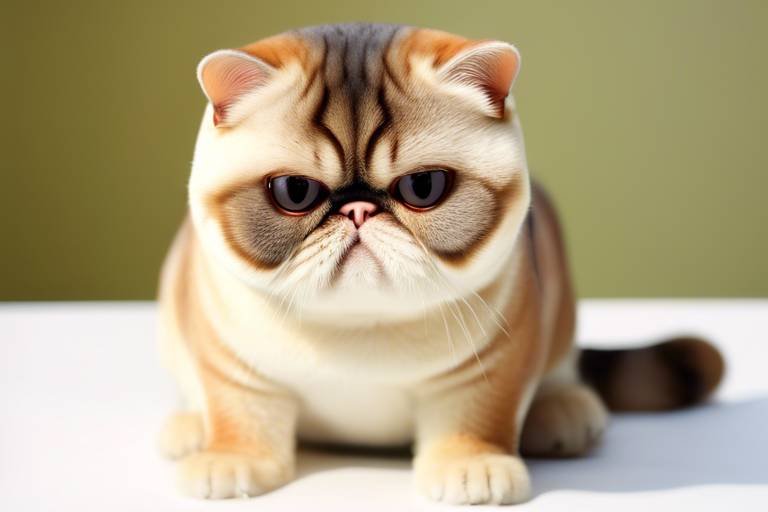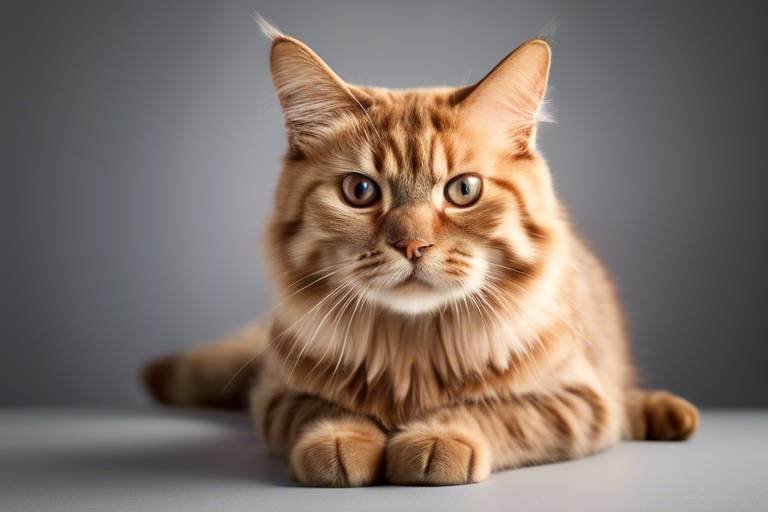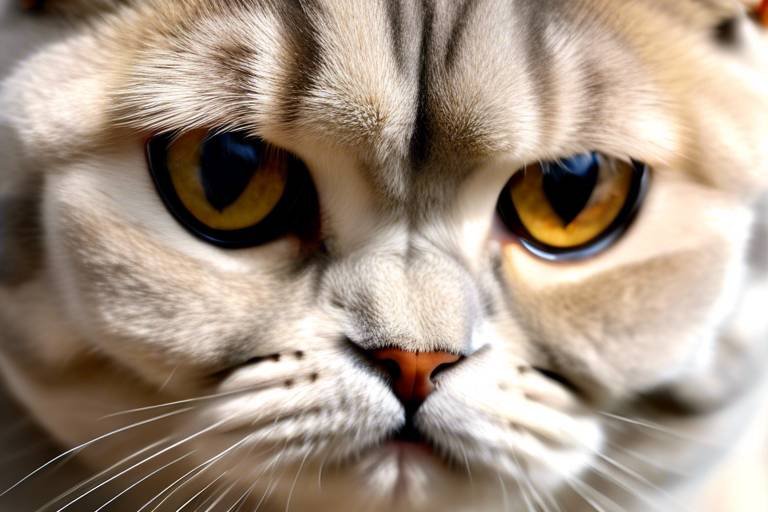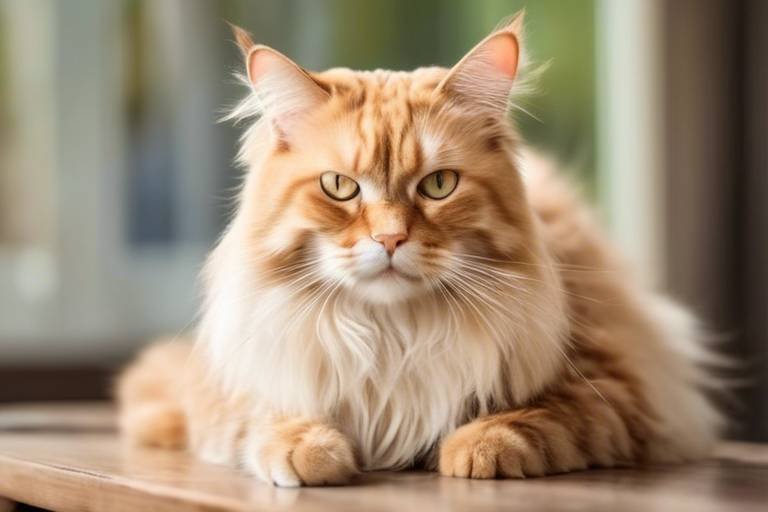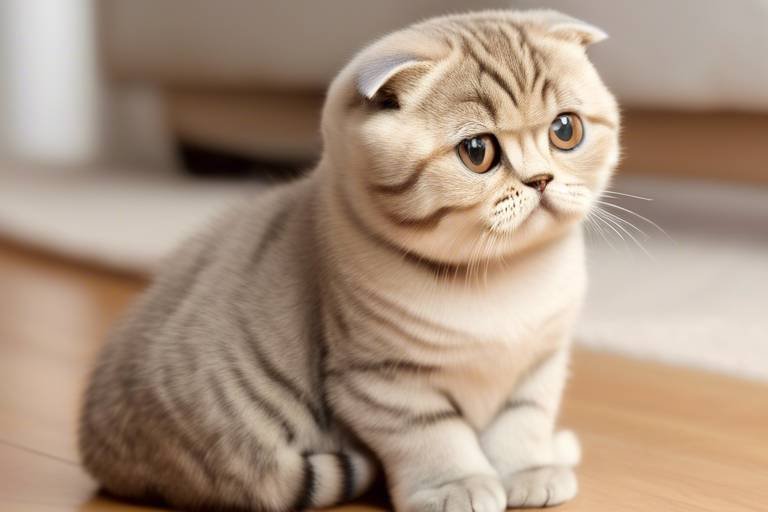The Unique Features of the British Shorthair
The British Shorthair is not just another cat breed; it’s a charming companion that has captured the hearts of many cat lovers around the world. With their distinctive appearance and delightful personality, these felines stand out in the crowded world of pets. But what exactly makes the British Shorthair so special? Let’s dive into the unique characteristics of this breed, exploring everything from their physical traits to their lovable temperament, ensuring you have all the information you need if you're considering welcoming one into your home.
When it comes to the British Shorthair's appearance, the first thing that strikes you is their robust build. These cats are known for their sturdy bodies and round features, which give them a cuddly, plush look. Their broad heads and short necks contribute to their stocky appearance, while their large, round eyes—often in stunning shades of copper or blue—add a touch of sweetness to their expression.
Their coat is another standout feature. British Shorthairs have a dense, plush coat that comes in a variety of colors and patterns, including the classic blue-grey, which is perhaps the most recognized. This breed's coat not only looks luxurious but also feels incredibly soft to the touch. Here’s a quick overview of their coat colors:
| Color | Description |
|---|---|
| Blue | A solid grey-blue color, the most iconic of the breed. |
| Black | Rich, deep black that shines in the light. |
| White | Pure and bright, often with striking blue or copper eyes. |
| Tabby | Patterned coats with stripes or spots, adding unique flair. |
These physical traits make the British Shorthair easily recognizable and adored by many. Their appearance alone is enough to make anyone stop and admire them!
Now, let’s talk about what’s inside that adorable exterior. British Shorthairs are celebrated for their calm and friendly demeanor. They are not your typical hyperactive cats; instead, they exude a sense of tranquility that makes them perfect companions for families and individuals alike. If you’re looking for a cat that’s not only affectionate but also independent, this breed checks all the boxes.
Understanding the social dynamics of British Shorthairs is key to their care. They are known to be quite social, often forming strong bonds with their human companions. Whether you’re relaxing on the couch or working at your desk, you can expect your British Shorthair to be nearby, offering their silent support. They also get along well with other pets, making them a fantastic choice for multi-pet households. Their affectionate nature means they will likely seek out your attention, but they are not overly demanding.
Another remarkable quality of the British Shorthair is their adaptability. Whether you live in a cozy apartment or a spacious house, these cats can thrive in various living environments. They are not overly reliant on outdoor space, which means they can be perfectly content lounging indoors. This versatility makes them an excellent choice for anyone, regardless of their living situation.
Despite their calm demeanor, British Shorthairs have a playful side that can surprise you! They enjoy engaging in playtime, whether it’s chasing after a feather toy or batting around a ball. This playful nature is essential for their mental stimulation and overall happiness. To keep them entertained, consider setting aside some time each day for interactive play. Not only does this strengthen your bond, but it also helps to keep your furry friend fit and healthy.
Maintaining the British Shorthair's stunning coat requires some attention. Regular grooming is essential to keep their fur in top condition and to reduce shedding. A simple grooming routine, involving a good brush a couple of times a week, should suffice. This not only helps to keep their coat looking fabulous but also provides an opportunity for you to bond with your cat.
Like all breeds, British Shorthairs have specific health concerns that potential owners should be aware of. Regular veterinary check-ups are crucial to monitor their health and catch any issues early. Common health problems in this breed include heart conditions and obesity, so maintaining a healthy weight through proper diet and exercise is vital.
A balanced diet is crucial for the health of British Shorthairs. They require high-quality cat food that meets their nutritional needs. It’s essential to consult with your veterinarian to determine the best diet plan for your feline friend. Keeping an eye on their weight is important, as this breed can be prone to obesity if not monitored closely.
While generally low-energy, British Shorthairs still need regular exercise to stay healthy. Incorporating playtime into their daily routine is beneficial for their physical and mental well-being. Engaging them in activities that stimulate their natural instincts will help keep them happy and active.
If you’re considering adding a British Shorthair to your family, it’s essential to choose a reputable breeder or adoption center. Understanding the breed and what to expect when bringing one home will help ensure a smooth transition for both you and your new furry friend. Prepare your home with the necessary supplies, and get ready to enjoy the delightful companionship of a British Shorthair!
- Are British Shorthairs good with children? Yes, they are typically very gentle and patient, making them great companions for kids.
- How much grooming do they require? They need regular brushing, but their grooming needs are relatively low compared to long-haired breeds.
- Do they require a lot of exercise? While they enjoy playtime, they are generally low-energy and do not require excessive exercise.
- Are they prone to any specific health issues? Yes, they can be prone to certain heart conditions and obesity, so regular vet check-ups are important.
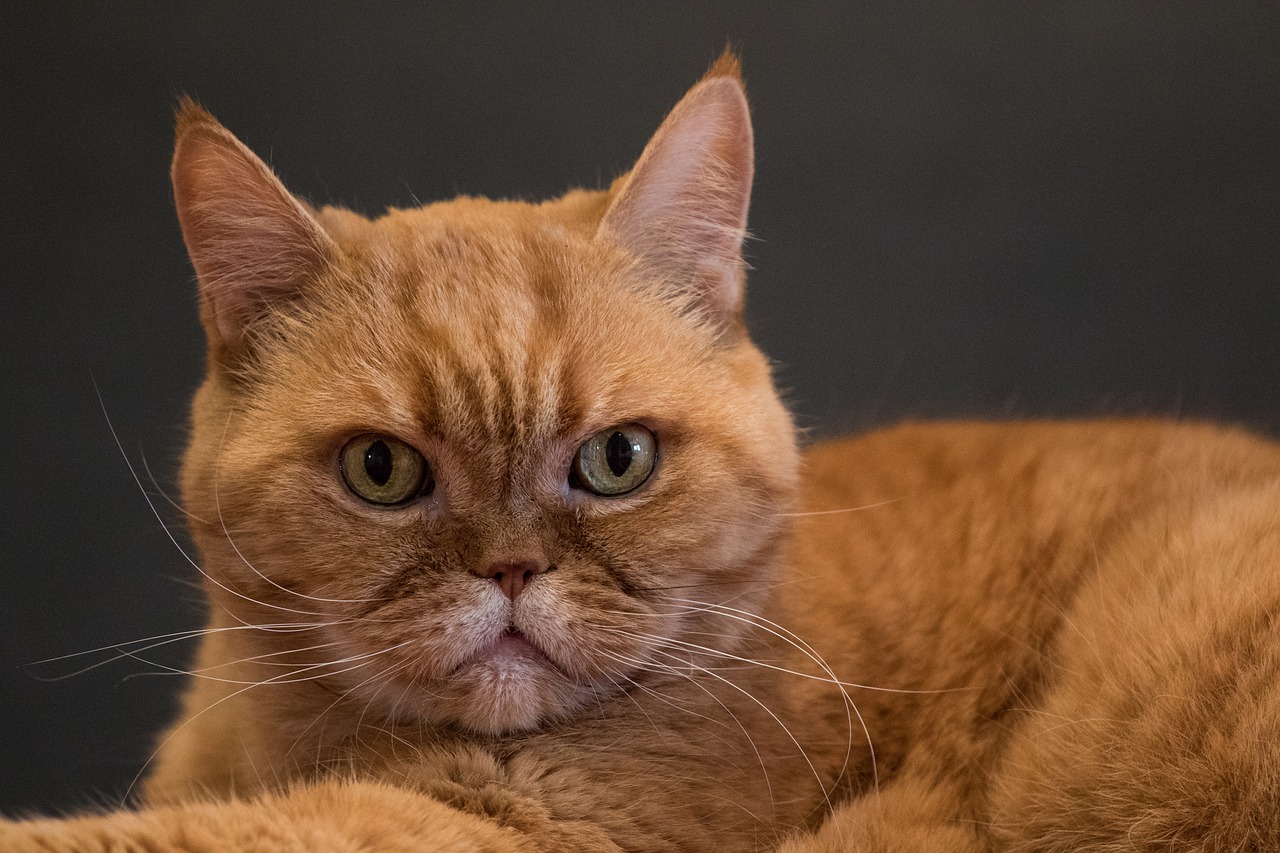
Physical Appearance
The British Shorthair is a breed that stands out in the feline world, primarily due to its robust build and round features. These cats exude a sense of strength and stability, making them visually striking companions. Their bodies are typically stocky and muscular, with broad chests and short, thick legs that give them a solid appearance. The head of a British Shorthair is another defining feature; it is large and round, complemented by full cheeks and a short, broad nose. Their ears are small and rounded, sitting wide apart on their head, which adds to their charming, teddy bear-like look.
One of the most captivating aspects of the British Shorthair is its coat. The breed is known for its dense, plush fur, which feels remarkably soft to the touch. This luxurious coat comes in a wide variety of colors and patterns, ranging from the classic blue-gray to more exotic shades like cream, chocolate, and even tortoiseshell. The uniformity of their coat is essential; it should be thick and even, giving the cat a well-groomed appearance. Here are some common coat colors:
- Blue
- Black
- White
- Red
- Cream
- Chocolate
- Tabby patterns
Moving on to their eyes, British Shorthairs are often characterized by their large, round eyes that can be copper, blue, or green, depending on the coat color. These expressive eyes give them a curious and intelligent look, making it hard to resist their charm. The overall combination of their physical traits creates a cat that is not only beautiful but also embodies a sense of regality.
In summary, the British Shorthair's physical appearance is a delightful mix of strength, softness, and elegance. Their robust body structure, plush coat, and captivating eyes make them a favorite among cat lovers. If you’re thinking about bringing one into your home, prepare to be enchanted by their distinctive looks!
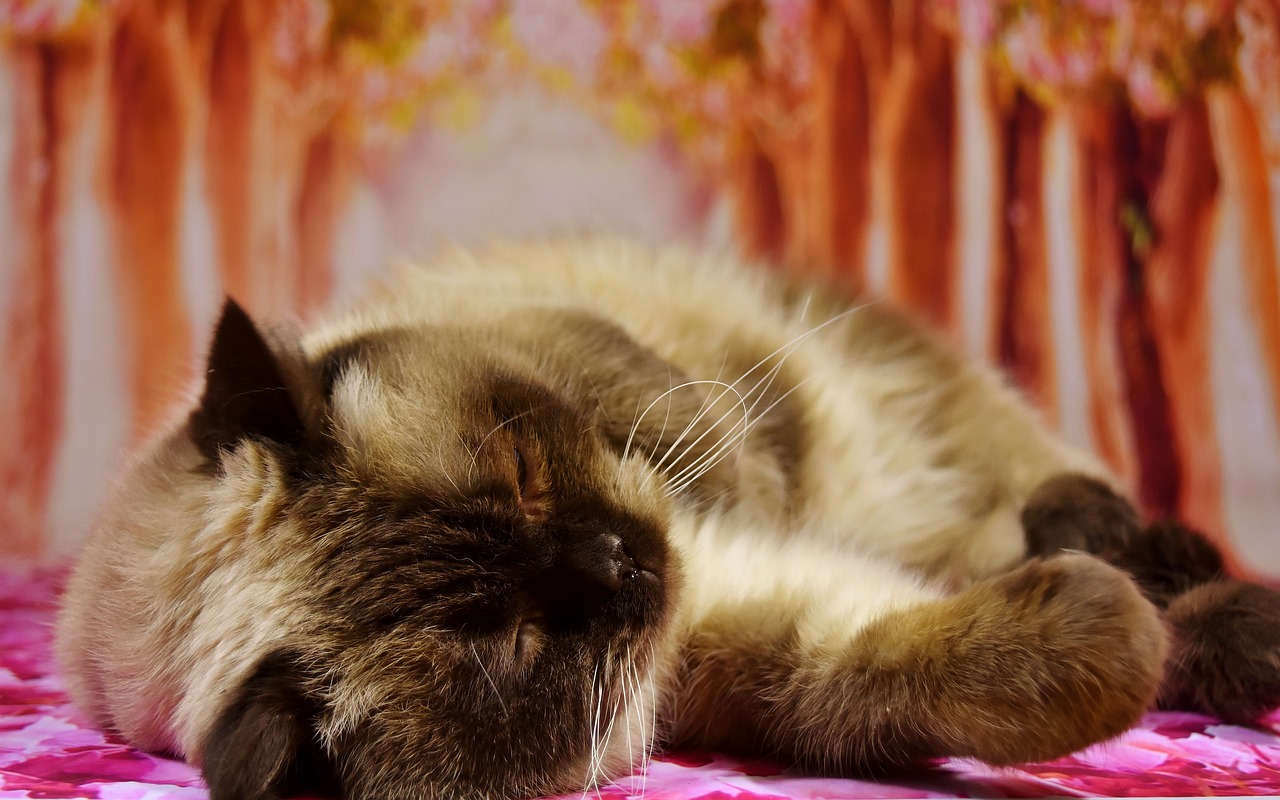
Temperament and Personality
The British Shorthair is not just a pretty face; their temperament and personality are equally captivating. Renowned for their calm and friendly demeanor, these cats are the perfect blend of independence and affection. Imagine coming home after a long day, and there they are, lounging comfortably, yet ready to greet you with a gentle nudge. This breed tends to form strong bonds with their human companions, making them feel like an integral part of the family.
What sets British Shorthairs apart is their social behavior. They are incredibly sociable creatures, often enjoying the company of both humans and other pets. Unlike some breeds that may shy away from interaction, British Shorthairs thrive on it. They are known to be playful yet not overly demanding, making them ideal companions for families with children or even for those living alone. You might find them curiously observing your activities or playfully engaging in a game of chase with a feather toy. Their playful nature is balanced with a sense of serenity, making them adaptable to various lifestyles.
Understanding how British Shorthairs interact socially is key to appreciating their personality. They are known for their affectionate nature, often seeking out their owners for a cuddle or a soft purr. However, they also value their personal space, displaying a unique blend of independence that many cat owners find appealing. This means they can entertain themselves and are perfectly content lounging in a sunny spot while you go about your day. Their ability to coexist peacefully with other pets is another bonus, as they tend to be non-confrontational and easygoing.
British Shorthairs are remarkably adaptable, which makes them suitable for various living situations. Whether you're in a bustling city apartment or a spacious house in the suburbs, these cats can thrive in both environments. They don’t require vast amounts of space to be happy, as long as they have their cozy spots and a few toys to keep them entertained. This adaptability is one of the reasons they are so popular among cat lovers.
While British Shorthairs are often viewed as laid-back, they have a playful side that can surprise you. They enjoy engaging in light-hearted play, whether it’s chasing after a laser pointer or batting around a ball of yarn. Regular playtime not only helps keep them physically active but also stimulates their minds. A few suggested activities include:
- Interactive toys that challenge their problem-solving skills
- Feather wands for engaging in a little hunting instinct
- Simple games of hide and seek with their favorite treats
These activities not only provide exercise but also strengthen the bond between you and your furry friend.
Q: Are British Shorthairs good with children?
A: Yes! British Shorthairs are known for their gentle and patient nature, making them excellent companions for children.
Q: Do they require a lot of attention?
A: While they enjoy companionship, British Shorthairs are relatively independent and can entertain themselves, making them suitable for busy households.
Q: How do they get along with other pets?
A: British Shorthairs are typically non-aggressive and can get along well with other pets, including dogs, especially if introduced properly.
Q: What is their grooming requirement?
A: They have a dense coat that requires regular brushing, but they are generally low-maintenance compared to other breeds.
Social Behavior
The social behavior of the British Shorthair is one of the most charming aspects of their personality. These cats are often described as affectionate and easygoing, making them wonderful companions for individuals and families alike. Unlike some cat breeds that may prefer solitude, British Shorthairs thrive on human interaction and are known for their gentle nature. They enjoy being around people and can often be found lounging nearby, keeping a watchful eye on their humans as they go about their daily activities.
One of the most delightful traits of British Shorthairs is their playful disposition. While they may not be as hyperactive as some breeds, they have a knack for engaging in play that captivates both children and adults. Whether it’s chasing a feather toy or batting around a ball of yarn, these cats know how to have fun. Their playful antics often bring joy and laughter to a household, creating a vibrant atmosphere that resonates with warmth.
When it comes to socializing with other pets, British Shorthairs typically adapt quite well. They are generally tolerant and can coexist peacefully with dogs and other cats, especially if introduced at a young age. Their calm demeanor and laid-back attitude make them less likely to engage in aggressive behaviors, allowing for a harmonious multi-pet household. However, it’s essential to supervise their interactions initially to ensure everyone gets along.
Furthermore, British Shorthairs possess a unique ability to read human emotions. They can sense when their owners are feeling down and often respond with comforting behavior. This emotional intelligence makes them particularly well-suited for families, as they can provide companionship and support during tough times. Their gentle purring and soft nuzzles can be incredibly soothing, turning them into the perfect furry therapists.
To summarize, the social behavior of British Shorthairs is characterized by their affectionate nature, playful spirit, and adaptability to various social settings. They are not just pets; they become integral members of the family, enriching lives with their presence. If you’re considering bringing a British Shorthair into your home, be prepared for a delightful companion that thrives on love and interaction.
- Are British Shorthairs good with children?
Yes, British Shorthairs are known for their gentle nature and are typically very good with children. They enjoy playtime and can be quite patient. - Do they require a lot of grooming?
No, British Shorthairs have a short, dense coat that requires minimal grooming. Regular brushing will help keep their fur healthy. - How much exercise do they need?
While they are generally low-energy cats, British Shorthairs still need regular playtime and interaction to stay healthy and happy.
Adaptability
The British Shorthair is often celebrated for its remarkable , making it a perfect companion for various living situations. Whether you reside in a bustling city apartment or a spacious countryside home, this breed tends to adjust seamlessly to its environment. Imagine having a friend who can fit in anywhere, from a cozy nook in a small flat to sprawling around a sunny garden; that’s the British Shorthair for you!
One of the key factors contributing to their adaptability is their calm demeanor. Unlike some breeds that thrive on constant stimulation, British Shorthairs are content to lounge around and observe their surroundings. This makes them ideal for individuals or families who may not have the time for high-energy pets. They can easily entertain themselves, yet they also enjoy the company of their humans. Just picture them curled up next to you on the couch, enjoying a quiet evening together.
Moreover, British Shorthairs are known to be quite versatile when it comes to socialization. They generally get along well with children and other pets, which means they can adapt to the dynamics of a busy household. For example, if you have kids who love to play, a British Shorthair can join in on the fun without being overly aggressive or anxious. Their friendly nature allows them to become a cherished member of the family, fitting in with the hustle and bustle of daily life.
Another aspect of their adaptability is their ability to manage various living spaces. British Shorthairs do not require large areas to roam; they can thrive in smaller spaces as long as they have some interactive toys and the occasional scratching post. It’s essential to create a stimulating environment for them, even in a compact apartment. Simple things like providing climbing shelves or cozy hideaways can keep them engaged and happy.
In summary, the British Shorthair's adaptability is a blend of their calm nature, sociability, and ability to thrive in diverse living conditions. They are not just pets; they are companions who can fit into your life, no matter where you are. So, if you’re considering bringing a British Shorthair into your home, rest assured that they will adjust beautifully, becoming a loving part of your family.
- Are British Shorthairs good for families with children?
Yes, they are known for their friendly and calm nature, making them great companions for children. - Do British Shorthairs require a lot of exercise?
While they are generally low-energy, they still need regular playtime and mental stimulation. - How much grooming do British Shorthairs need?
They have a dense coat that requires regular brushing to minimize shedding and keep their fur healthy. - Can British Shorthairs live in small apartments?
Absolutely! They adapt well to smaller living spaces as long as they have engaging activities.
Playfulness
The British Shorthair may have a reputation for being calm and composed, but don't let that fool you! Beneath their plush, round exterior lies a playful spirit just waiting to be unleashed. These cats are not just couch potatoes; they have a delightful knack for engaging in playful antics that can easily brighten your day. Think of them as the gentle giants of the feline world, with a playful side that rivals even the most energetic kittens.
One of the most charming aspects of their playfulness is how they express it. British Shorthairs often enjoy interactive play, where they can engage with their human companions. Whether it's chasing a feather toy, batting around a ball, or pouncing on a laser dot, these activities can spark their natural hunting instincts. It's a joy to watch them leap and bound, showcasing their agility despite their sturdy build. Just imagine your British Shorthair, eyes wide with excitement, as they chase after a toy mouse – it’s a scene that never fails to elicit a smile!
Moreover, their playful nature is not just about physical activity; it also involves mental stimulation. These cats thrive on challenges that engage their minds. Puzzle toys or treat dispensers can keep them entertained for hours, providing both fun and mental exercise. This aspect of play is crucial for their overall well-being, as it helps prevent boredom and associated behavioral issues. So, if you find your British Shorthair staring at you with those big, round eyes, it might be time to pull out a new toy or challenge them with a puzzle!
To truly cater to their playful side, consider setting up a designated play area in your home. This could include a variety of toys, climbing structures, and scratching posts. Not only does this encourage play, but it also helps keep your furniture safe from those playful paws! Remember, a well-stimulated British Shorthair is a happy one. So, don’t shy away from joining in on the fun – after all, who wouldn’t want to be part of a playful adventure with their furry friend?
In summary, the playful nature of the British Shorthair is an integral part of their charm. They balance their calm demeanor with bursts of energy that can turn any ordinary day into an extraordinary one. By engaging them in various activities and providing the right environment, you can ensure that your British Shorthair remains a vibrant and joyful companion for years to come.
- How much playtime does a British Shorthair need? British Shorthairs benefit from at least 15-30 minutes of active play each day, divided into several sessions.
- What types of toys do British Shorthairs prefer? They enjoy interactive toys, feather wands, and puzzle toys that challenge their minds.
- Can British Shorthairs entertain themselves? Yes, they can, but providing them with engaging toys and activities is essential to keep boredom at bay.
Grooming Needs
When it comes to grooming your British Shorthair, you might be surprised at how simple yet essential the process can be. With their plush, dense coats, these cats not only look adorable but also require regular maintenance to keep their fur looking its best. The British Shorthair's coat is short, but it is thick and requires attention to prevent matting and to control shedding. Regular grooming sessions can be a bonding experience for you and your feline friend, making it an enjoyable routine rather than a chore.
Generally, brushing your British Shorthair once a week should suffice to keep their coat healthy and free of tangles. However, during shedding seasons, which typically occur in spring and fall, you may want to increase the frequency to two or three times a week. This will help remove loose hair and reduce the amount of fur scattered around your home. Using a slicker brush or a rubber grooming mitt can be particularly effective in managing their thick coat.
In addition to brushing, it's important to pay attention to other grooming aspects such as nail trimming, ear cleaning, and dental care. Keeping their nails trimmed every couple of weeks prevents overgrowth and potential injury. Ear cleaning should be done monthly or as needed, using a veterinarian-recommended solution to keep wax buildup at bay. Dental hygiene is equally crucial; brushing your British Shorthair's teeth regularly can help prevent dental issues down the line.
Here’s a quick summary of the grooming needs for your British Shorthair:
| Grooming Task | Frequency | Tools Needed |
|---|---|---|
| Brushing | Once a week (more during shedding season) | Slicker brush or rubber grooming mitt |
| Nail trimming | Every 2 weeks | Cat nail clippers |
| Ear cleaning | Monthly or as needed | Veterinarian-recommended ear cleaner |
| Dental care | Regularly (at least a few times a week) | Cat toothbrush and toothpaste |
In conclusion, the grooming needs of your British Shorthair are not only about aesthetics; they play a crucial role in your cat's overall health and well-being. Establishing a grooming routine early on will not only keep your cat looking fabulous but also strengthen the bond between you and your furry companion. So, grab those grooming tools and let the pampering begin!
- How often should I groom my British Shorthair? - Aim for once a week, but increase frequency during shedding seasons.
- What tools do I need for grooming? - A slicker brush, cat nail clippers, and ear cleaning solution are essential.
- Is it necessary to clean my cat's ears? - Yes, regular cleaning helps prevent infections and wax buildup.
- Can I use human toothpaste for my cat's dental care? - No, always use toothpaste specifically formulated for cats.
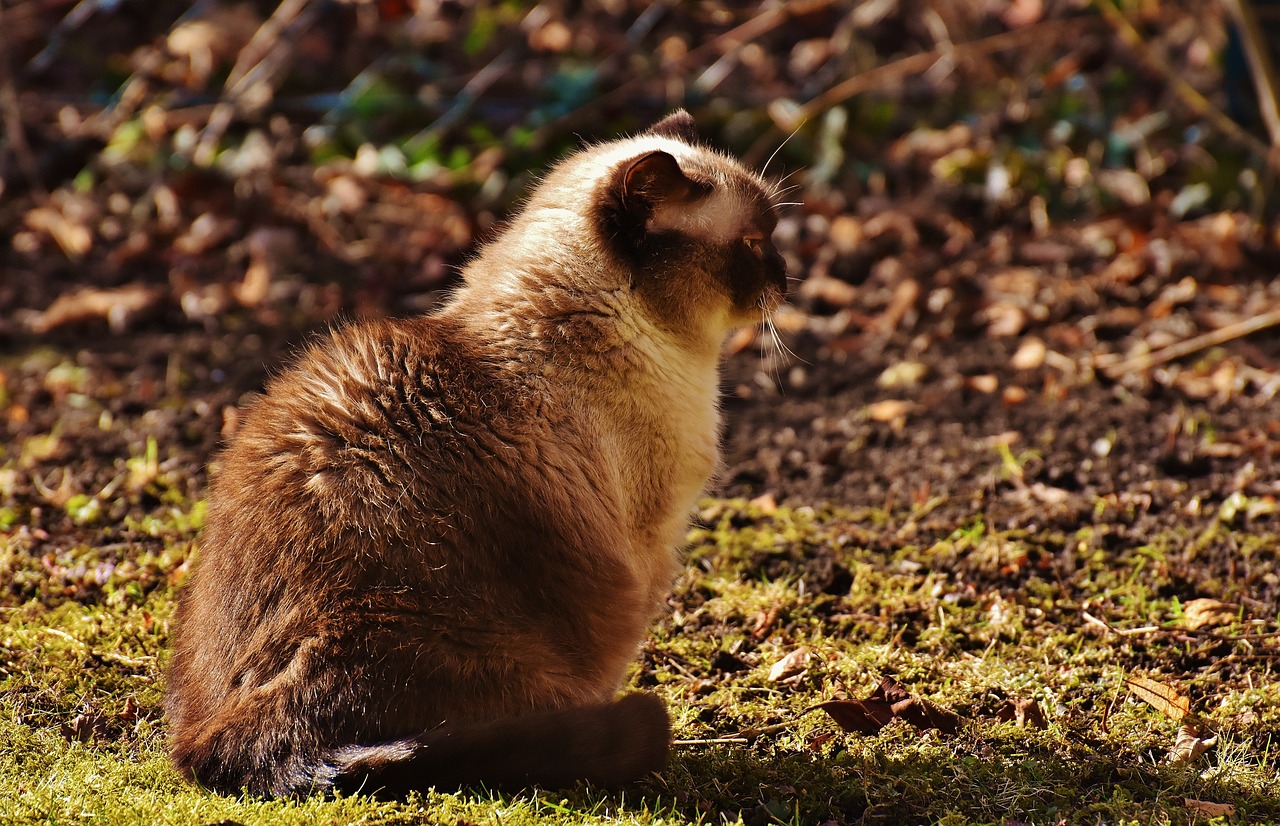
Health Considerations
The British Shorthair, with its charming appearance and delightful personality, is a breed that deserves special attention when it comes to health. Like all pets, they are susceptible to certain health issues that can affect their quality of life. Understanding these concerns is essential for any potential owner, as it allows you to provide the best care possible. Some common health issues associated with British Shorthairs include hypertrophic cardiomyopathy (HCM), which is a heart condition that affects many cats, as well as obesity, dental problems, and certain genetic disorders.
To ensure your British Shorthair lives a long, healthy life, regular veterinary check-ups are crucial. These visits can help catch any potential issues early on, allowing for timely intervention. During these check-ups, your vet will likely perform a thorough examination, including:
- Heart and lung assessment
- Dental check-up
- Weight monitoring
- Vaccination updates
Moreover, being aware of the signs of common health issues can empower you as an owner. For instance, if you notice your cat becoming less active or showing changes in appetite, it might be time for a vet visit. Keeping an eye on their weight is also essential, as British Shorthairs can easily become overweight due to their laid-back nature. A healthy weight not only contributes to their overall well-being but also reduces the risk of developing related health problems.
Additionally, it's worth mentioning that British Shorthairs have a tendency to develop dental issues, which can lead to more severe health complications if left untreated. Regular dental care at home, including brushing their teeth and providing dental treats, can help maintain their oral health. You can also consult your veterinarian for professional dental cleanings as needed.
In summary, being proactive about your British Shorthair's health can make a world of difference. Regular vet visits, a balanced diet, and attention to their physical condition will help ensure your feline friend remains happy and healthy for years to come.
- What are the common health issues in British Shorthairs?
British Shorthairs are prone to hypertrophic cardiomyopathy (HCM), obesity, and dental problems. - How often should I take my British Shorthair to the vet?
Regular check-ups are recommended at least once a year, or more frequently if your cat has existing health issues. - What can I do to prevent obesity in my British Shorthair?
Provide a balanced diet, monitor their weight, and encourage regular playtime to keep them active. - Are there any specific dietary needs for British Shorthairs?
Yes, a high-quality diet rich in protein and low in fillers is ideal for maintaining their health. - How can I maintain my British Shorthair's dental health?
Regular brushing, dental treats, and professional cleanings can help keep their teeth healthy.
Diet and Nutrition
When it comes to the of British Shorthairs, it's essential to understand that they have specific dietary needs that cater to their unique physiology. These cats are known for their sturdy build and relatively low activity levels, which means their diet must be carefully balanced to prevent obesity while ensuring they receive all necessary nutrients. A high-quality cat food that lists meat as the first ingredient is always a good starting point. This is because British Shorthairs thrive on a protein-rich diet that supports their muscle health and overall vitality.
It's also crucial to provide a mix of both wet and dry food. Wet food can help keep them hydrated and is often more palatable, while dry food helps with dental health. When choosing food, look for options that are specifically formulated for indoor cats, as these blends are designed to meet the energy needs and weight management requirements of less active felines. Additionally, consider the age of your British Shorthair; kittens, adults, and seniors have different nutritional requirements. For instance, kittens need higher protein and fat levels to support their rapid growth, while senior cats may benefit from a diet lower in calories but enriched with joint-supporting nutrients.
To make things easier for you, here's a quick comparison of typical dietary needs based on age:
| Age Group | Protein Requirement | Fat Requirement | Special Considerations |
|---|---|---|---|
| Kittens | 30-40% | 15-25% | High energy for growth |
| Adults | 25-35% | 10-20% | Maintain healthy weight |
| Seniors | 20-30% | 8-15% | Joint support and low calories |
Moreover, portion control is key. It's easy to overfeed these affectionate cats, especially when they give you those irresistible pleading eyes. To avoid this pitfall, measure out their food according to the guidelines provided on the packaging and adjust based on their activity level and weight. Regularly monitoring their weight can help you make necessary adjustments to their diet.
Lastly, don’t forget about the importance of fresh water. Hydration is vital for all cats, and British Shorthairs are no exception. Always ensure that your furry friend has access to clean, fresh water. Some cats prefer running water, so consider investing in a cat water fountain, which can encourage them to drink more.
In summary, a well-rounded diet for a British Shorthair should include:
- High-quality protein sources as the main ingredient.
- A combination of wet and dry food for hydration and dental health.
- Age-appropriate nutrition to meet their changing needs.
- Regular portion control to prevent obesity.
- Access to fresh water at all times.
By following these guidelines, you can ensure that your British Shorthair stays happy, healthy, and full of life. Remember, a well-fed cat is often a content cat, and your attention to their dietary needs will pay off in the long run with a vibrant companion by your side.
Q: What is the best type of food for a British Shorthair?
A: Look for high-quality cat food that lists meat as the first ingredient. A mix of wet and dry food is ideal.
Q: How much should I feed my British Shorthair?
A: Portion control is crucial. Follow the feeding guidelines on the food packaging and adjust based on your cat's activity level and weight.
Q: Do British Shorthairs have any specific dietary restrictions?
A: While they don’t have strict dietary restrictions, it's best to avoid foods that are toxic to cats, such as onions, garlic, and chocolate.
Q: Should I give my British Shorthair treats?
A: Yes, but in moderation! Treats should only make up a small portion of their overall diet to avoid weight gain.
Exercise Requirements
When it comes to the British Shorthair, one might think that their calm demeanor translates to a low need for exercise. However, that couldn't be further from the truth! While they are generally low-energy cats, they still require regular exercise to maintain their health and prevent obesity. Think of it this way: just like us, cats need a good mix of activity to stay fit and happy. So, how do we keep our furry friends active? Let's dive into their exercise requirements!
First off, it's essential to understand that British Shorthairs can be quite the playful bunch, despite their laid-back nature. They enjoy engaging in activities that stimulate their natural hunting instincts. This means that incorporating playtime into their daily routine is crucial. You might want to consider toys that mimic prey, such as feather wands or laser pointers, which can ignite their curiosity and encourage them to chase and pounce. A good play session can be just what the doctor ordered to keep them healthy and entertained.
In terms of duration, aim for at least 20 to 30 minutes of playtime each day. This can be broken up into shorter sessions spread throughout the day. Not only does this help in keeping their weight in check, but it also strengthens the bond between you and your feline companion. After all, engaging in play can be a fantastic way to show them love and attention. You might even find that they become more affectionate after a good romp around the living room!
Additionally, consider setting up an environment that encourages movement. Cat trees, scratching posts, and tunnels can create a mini jungle gym right in your home. These structures not only provide a place for your British Shorthair to climb and explore but also help in satisfying their natural instincts. You'd be surprised how much they love to scale heights and hide in cozy spots!
It's also important to keep an eye on their weight. British Shorthairs are prone to obesity, which can lead to various health issues. Regular exercise, combined with a balanced diet, plays a significant role in keeping them fit. If you're ever in doubt, consult your veterinarian for tailored advice on your cat's specific exercise needs based on their age, weight, and overall health.
In summary, while British Shorthairs may not be the most hyperactive cats, they still need regular exercise to thrive. By incorporating playtime, creating an engaging environment, and monitoring their health, you can ensure that your British Shorthair remains a happy and healthy member of your family. Remember, a little play goes a long way!
- How often should I play with my British Shorthair? It's recommended to engage in play for at least 20 to 30 minutes each day, broken up into shorter sessions.
- What types of toys do British Shorthairs enjoy? They typically love toys that mimic prey, such as feather wands, laser pointers, and interactive toys.
- Can British Shorthairs exercise indoors? Absolutely! Indoor play is perfect for them. Cat trees and tunnels can help keep them active.
- How can I tell if my British Shorthair is overweight? Look for a visible waistline and check if you can feel their ribs without too much pressure. If in doubt, consult your vet.
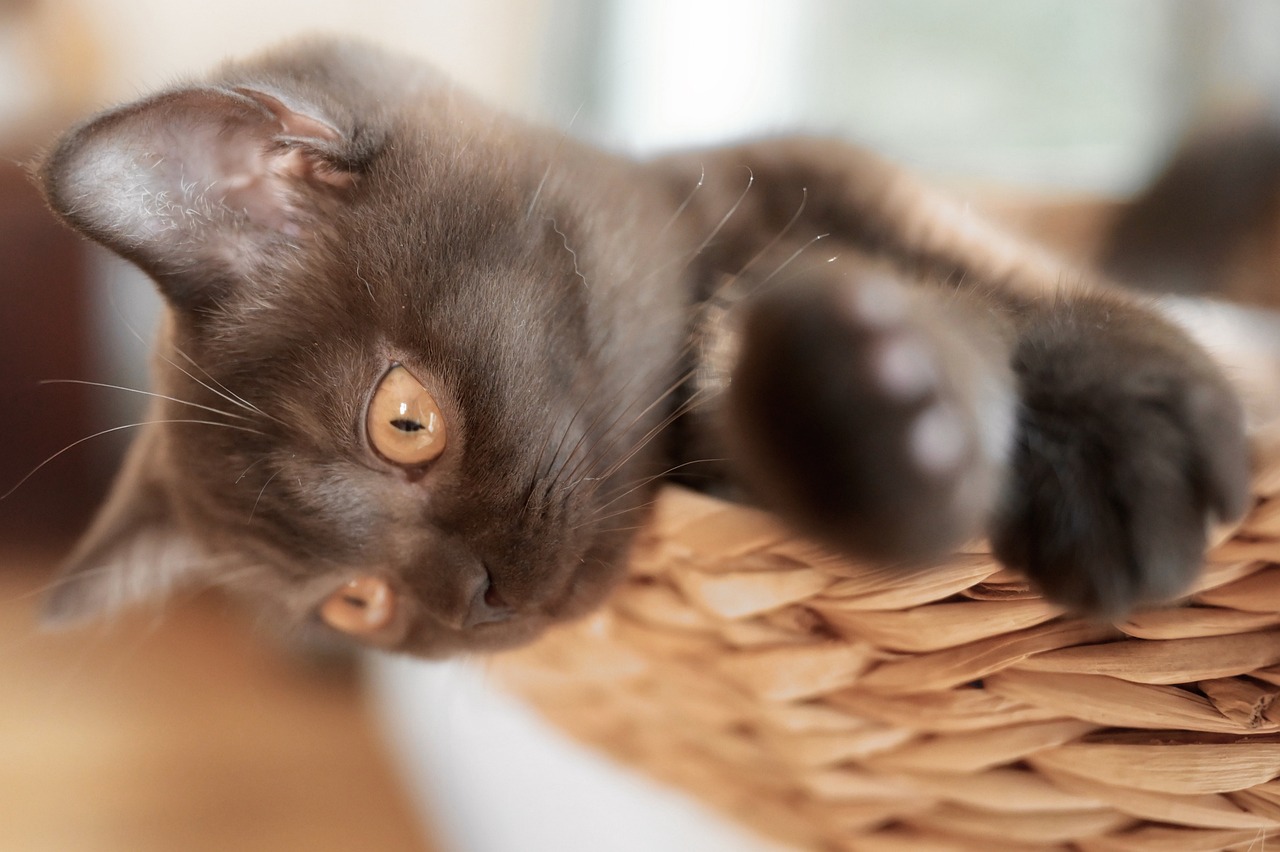
Choosing a British Shorthair
Thinking about welcoming a British Shorthair into your home? That’s a fantastic choice! These charming cats are not only stunning but also make for delightful companions. However, before you rush out to find your new furry friend, it’s essential to do your homework. Choosing the right British Shorthair involves a few critical steps to ensure you’re making a well-informed decision. First and foremost, consider where you’re getting your cat from. It’s crucial to select a reputable breeder or adoption center. A responsible breeder will prioritize the health and temperament of their cats, providing you with a strong foundation for your new pet.
When searching for a breeder, look for those who are registered with recognized cat associations, such as the Cat Fanciers' Association (CFA) or The International Cat Association (TICA). These organizations ensure that breeders adhere to specific standards and practices. You can also ask for references from previous buyers or visit the breeder’s facilities to see the living conditions of the cats. A good breeder will be more than happy to show you around and answer any questions you may have.
If you’re considering adoption, check local shelters or rescue organizations. Many British Shorthairs end up in shelters due to unforeseen circumstances, and adopting one can be a rewarding experience. When adopting, be sure to ask about the cat’s history, health status, and temperament. This information can help you determine if the cat is a good fit for your lifestyle.
Once you find a potential British Shorthair, it’s time to assess their health and temperament. Look for signs of a healthy cat, such as clear eyes, a clean coat, and an alert demeanor. Don’t hesitate to ask for a health certificate from the breeder or shelter, which can provide you with peace of mind about your cat’s well-being. Additionally, spend some time interacting with the cat to gauge their personality. British Shorthairs are known for their calm and affectionate nature, but individual personalities can vary.
Before bringing your British Shorthair home, prepare your living space. Make sure you have all the necessary supplies, including food and water bowls, a litter box, scratching posts, and toys. Cats thrive in environments where they can express their natural behaviors, so providing them with a stimulating and comfortable space is essential for their happiness.
Finally, remember to give your new British Shorthair time to adjust to their new surroundings. Cats can be sensitive to change, and it may take a few days or even weeks for them to feel completely at home. Be patient and allow them to explore their new environment at their own pace. Before you know it, your British Shorthair will become a beloved member of your family!
- What should I look for in a breeder? Look for registered breeders with good reputations, health guarantees, and clean living conditions.
- Is it better to adopt or buy a British Shorthair? Both options have their merits. Adopting can save a life, while buying from a reputable breeder ensures a specific lineage.
- How can I prepare my home for a new British Shorthair? Ensure you have all the necessary supplies, including food, litter, toys, and a comfortable space for them to explore.
- What is the typical temperament of a British Shorthair? They are known for being calm, friendly, and affectionate, making them great companions.
Frequently Asked Questions
- What is the typical lifespan of a British Shorthair?
The average lifespan of a British Shorthair is between 12 to 20 years. With proper care, a balanced diet, and regular veterinary check-ups, many can live well into their teens or even longer!
- Are British Shorthairs good with children and other pets?
Absolutely! British Shorthairs are known for their friendly and calm temperament, making them great companions for children. They also tend to get along well with other pets, including dogs, especially if introduced at a young age.
- How often should I groom my British Shorthair?
It's best to groom your British Shorthair at least once a week to keep their coat healthy and free of mats. During shedding seasons, you might want to increase grooming to a couple of times a week to manage loose fur.
- What are common health issues in British Shorthairs?
Common health concerns include obesity, heart disease, and certain genetic conditions like hypertrophic cardiomyopathy. Regular vet visits and a healthy diet are essential to help mitigate these risks.
- What type of diet is best for a British Shorthair?
A high-quality, protein-rich diet is ideal for British Shorthairs. Look for cat food that lists meat as the first ingredient, and be mindful of their calorie intake to prevent obesity.
- Do British Shorthairs need a lot of exercise?
While they are generally low-energy, British Shorthairs do enjoy playtime. Regular interactive play sessions and engaging toys can help keep them active and healthy.
- How do I choose a reputable breeder for a British Shorthair?
When looking for a breeder, make sure to visit their facility, ask about health screenings, and request references from previous buyers. A responsible breeder will prioritize the health and temperament of their cats.
- Can British Shorthairs adapt to apartment living?
Yes, British Shorthairs are quite adaptable and can thrive in apartment settings as long as they have enough space to move around and play. Providing them with climbing structures and interactive toys can help keep them entertained.
- What should I expect when bringing a British Shorthair home?
When you first bring a British Shorthair home, give them time to adjust to their new environment. They may be shy at first, but with patience and gentle interaction, they will soon become a loving part of your family.




